Chris Harbin is one of
Doom's more obscure authors. While he donated one of his unfinished levels to
Death Tormention II, his magnum opus is this,
Operation: BIOWAR. Released in 1999,
BIOWAR is one of those
Doom II megaWADs that didn't bother to stretch to fit the mythical thirty-two map slots. Instead, it's eighteen normal maps plus one secret level, and I believe the whole thing plays back in vanilla
Doom. Of course, Harbin didn't necessarily go it alone, and
Biowar also features the stylings of Paul Corfiatis, who revised one of his levels from
Twilight Zone II, and John Bishop, who released a smattering of solo releases over the late 90s, and was apparently a contributor to
Plutonia 2 in its initial stages of development, though those levels are now confined to the archived development WADs.

The plot of
Biowar is both simple and hilarious. The UAC, not content to fuck up through the usual channels, has gone for the gold. Apparently, the president of the corporation has allied himself with one of Hell's most powerful demons, codenamed TCHERNOBOG. He somehow has the authority to sell the souls of the workers to TCHERNOBOG in exchange for a limitless supply of living biological weapons. You know, demons. Anyway, the UAC mounts an offensive against the organization you belong to. Since the author references
Icarus: Alien Vanguard in the .TXT, I'm going to assume that it serves in a capacity similar to the Earth Defense Force. In the ensuing carnage, your main headquarters and "skybase" are overrun, and Flynn Taggart (presumably Doomguy) appears to be dead. You're the new last marine, in all your weird Liefeld face glory.
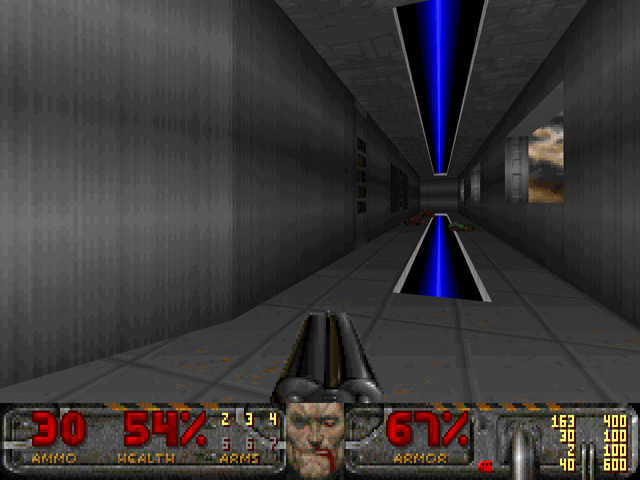
As far as what
Biowar is actually like, I'd say it's kind of like a mix of
Cygnus IV /
The Talosian Incident in its pacing and
Icarus for its action and visuals. As long as Harbin is at the helm, the monster count barely exceeds 150, and it's usually zombies or monsters that are dealt in relatively easy to handle chunks, not counting edge cases like the pain elemental posse of MAP07. These levels are basically short and pretty straightforward, and there's not a lot of room for you to get lost in. Bishop's two levels are obvious outliers, reminding me of similar forays in
Talosian where the guest authors were completely at odds with what the main contributors were trying to achieve. Harbin has a much better sense of action than John Bye, though, which makes this mapset an easy recommendation.

Of course, BIOWAR suffers from a mild case of developmental syndrome, which is a vague way of saying that Harbin's craft as a level designer feels better in the later maps than it does in the first, particularly with MAP17, which would be a standout level in just about any 90s megaWAD. Maybe that's just my perception of the progression, though, in which case it makes perfect sense for the MAP29 equivalent to be a pull-out-all-the-stops sort of event that showcases everything the author has learned so far. It's just a strange disconnect when compared against the relatively humble beginnings.

There's a lot of DoomCute stuff I would expect from someone with a flair for TNT's epics like mini-spaceships and monsters on computer screens There's also some other stuff that speaks of Things Not Yet Seen, like those blue scanline floors, swirling pentagram teleporter pads, and a level that takes place in an ancient forest that brings to mind The Legend of Zelda: Ocarina of Time. Harbin uses the Hellish void motif in the last few levels to good effect, and there's even something I never expected to see in Doom in the secret level. The more I play, though, the more I learn to expect the unexpected. One thing that seemed out of place at first was the recurring boss cube on computer screen graphic which is later used to great effect in a surreal maze.

Biowar isn't particularly hard when compared to other stuff in 1999. It isn't in to ammo starvation, giving the player the tools needed for the job and then some, with the occasional secret to nudge you toward the finish line. Bishop's levels are an obvious exception, where careless players will be nickeled and dimed to death by either hard to manage claustrophobic encounters in one case or complete and total hitscanner overload in the other. Paul's "Security" has some beefy monsters, but it's nothing compared to the exacting standard set by his contemporary Death Tormention II. His sole offering is a pretty good action-packed adventure that stands as a solid checkpoint between the first and second halves of the megaWAD.

As far as special effects go, Harbin makes some good use of midtextures for some neat bits of detailing, but I think the blown-apart blast door in MAP01 is the only great example. Most of his fungineering comes from sound scripting to conjure up the image that you're fighting through a base under siege and arriving one moment too late to save your fellow defenders. It seems like the best choice sans a DeHackEd patch, since an "ambient" method would repeat and ruin the atmosphere. Speaking of fungineering, Mark Klem is credited as the sound track author, which just piles on that oldschool megaWAD feel.

Harbin does a pretty good job where many other beginners have faltered. BIOWAR's levels are short, but avoid being insubstantial. The custom resources are more carefully selected and employed. The pistol start balance is pretty good, so it's ready to pick up and play wherever you want and avoids turning into a yawn-fest due to unstoppable momentum. The only thing it doesn't have is a full thirty-two levels, but the only thing that buys you is not rolling straight into "The Citadel" after slaying the big bad, and I think that you can afford to look the other way. Go ahead and grab Biowar, unless you're the kind of space marine that's always looking for a bigger, badder challenge, in which case you've probably left this one long behind.


OPERATION:
BIOWAR
by Chris Harbin et al
| The End | MAP01 |
|---|
| A short, bloody intro that does a decent job of busting you into the action with a pinch of story. There are some triggered noises of stuff like enemies dying off camera to add a little cinematic flair and the blown-open base door is pretty cool. The action is slow, since you're confined to the pistol for most of it, and you might not take the time to get into the locked shotgun guy bunkers. It's good enough, though. | 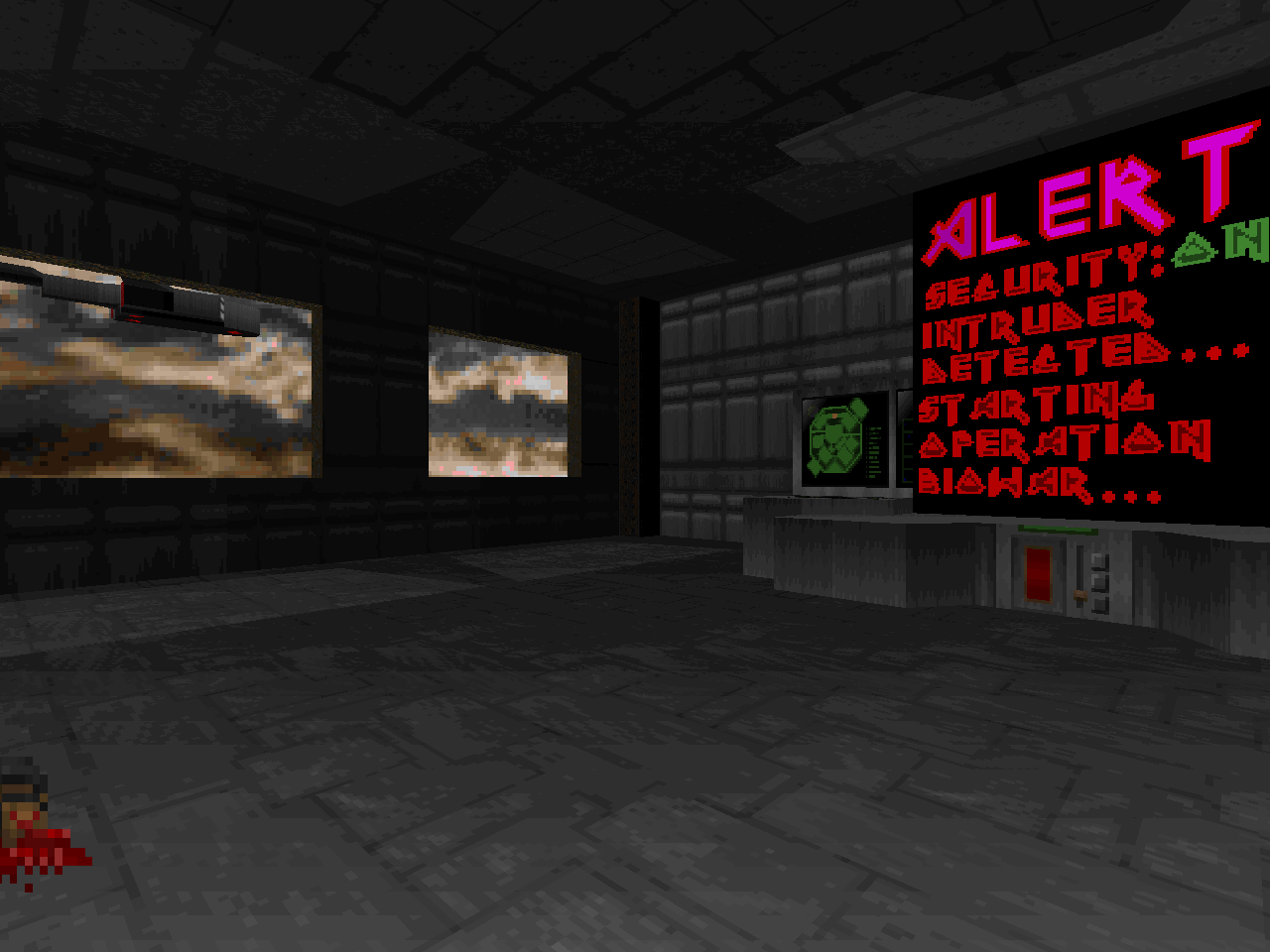 |
| MAP02 | Terror Core |
|---|
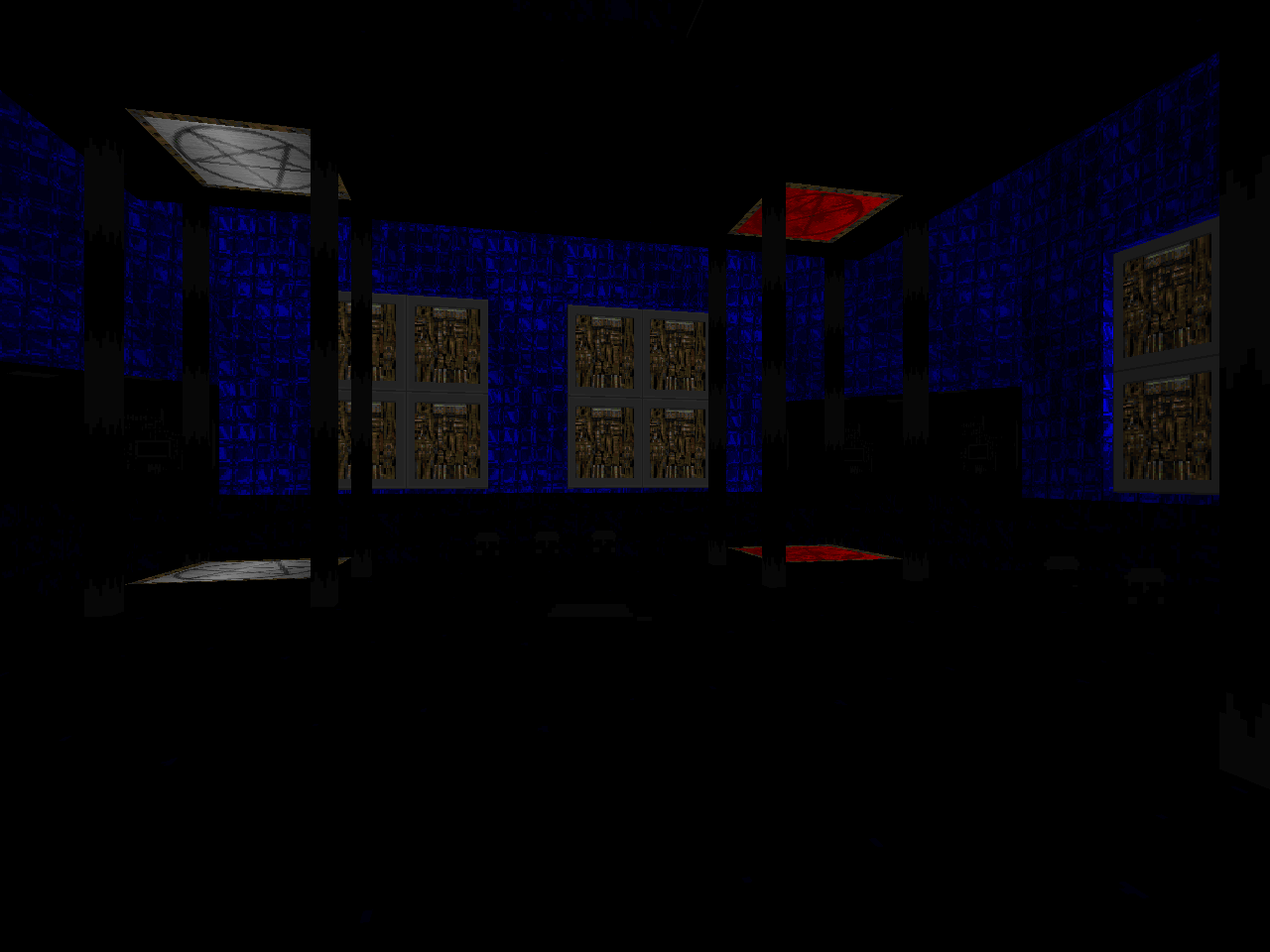 | A very short teleporter hub level. The blue tile texture in the hub is a neat shock. The worst thing you have to do, besides blind teleports into Doom trash, is deal with a pair of chaingunners in one of the wings. Apart from that, I don't have much to say, except that Harbin does a decent job at making the little wings presentable, and I love the hook where the switches causes keys to appear "out of thin air" (up from below). |
| Onslaught | MAP03 |
|---|
| An adventure-style level that takes you from the compound through the wilderness to another monster-infested base. While it's still dances with shotgun, you get to play around with the chaingun and the cacodemon and Hell knight make welcome appearances. Most of the monsters are dangerous because the level is so gosh darn dark, and those two commandos guarding the north elevator did a good job of sneaking up on me. I like the architecture, particularly in the north end. The teleport ambush at the finale is the standout fight. |  |
| MAP04 | The Arrival |
|---|
 | A tiny military installation with a hangar, a reactor, and a little bio-lab. It's DoomCute and decently so. I'd love it if the base were a bit larger, but it's clear that Harbin is weighted toward smaller levels. The action is pretty standard but there are a few sneaky traps like the "Focus" homage in whatever constitutes the main hallway and I love the reactor fight, which while not very good at getting the cacodemons out in a timely manner has them appear one after another from the vessel's goo. |
| Skybase | MAP05 |
|---|
| Harbin busts up into the medium size map range, a welcome change. "Skybase" starts out in a crate maze before turning into lovely silver techbase with some odd bits like the blue outskirts of the yellow key room, staffed by imps. The actual layout is kind of stringy, but the set pieces in each room combined with the brutal back and forth work to distract you from the essentials. Lots of monsters to kill and plenty of hitscanners that will chip away at your fast-dwindling health. The baron debuts as a sort of miniboss encounter but neither it nor the revenants have a chance to leave much of an impression, unless you're really bad at dodging revenant rockets in those super-wide hallways and rooms. |  |
| MAP06 | Last Call |
|---|
| by John Bishop |
|---|
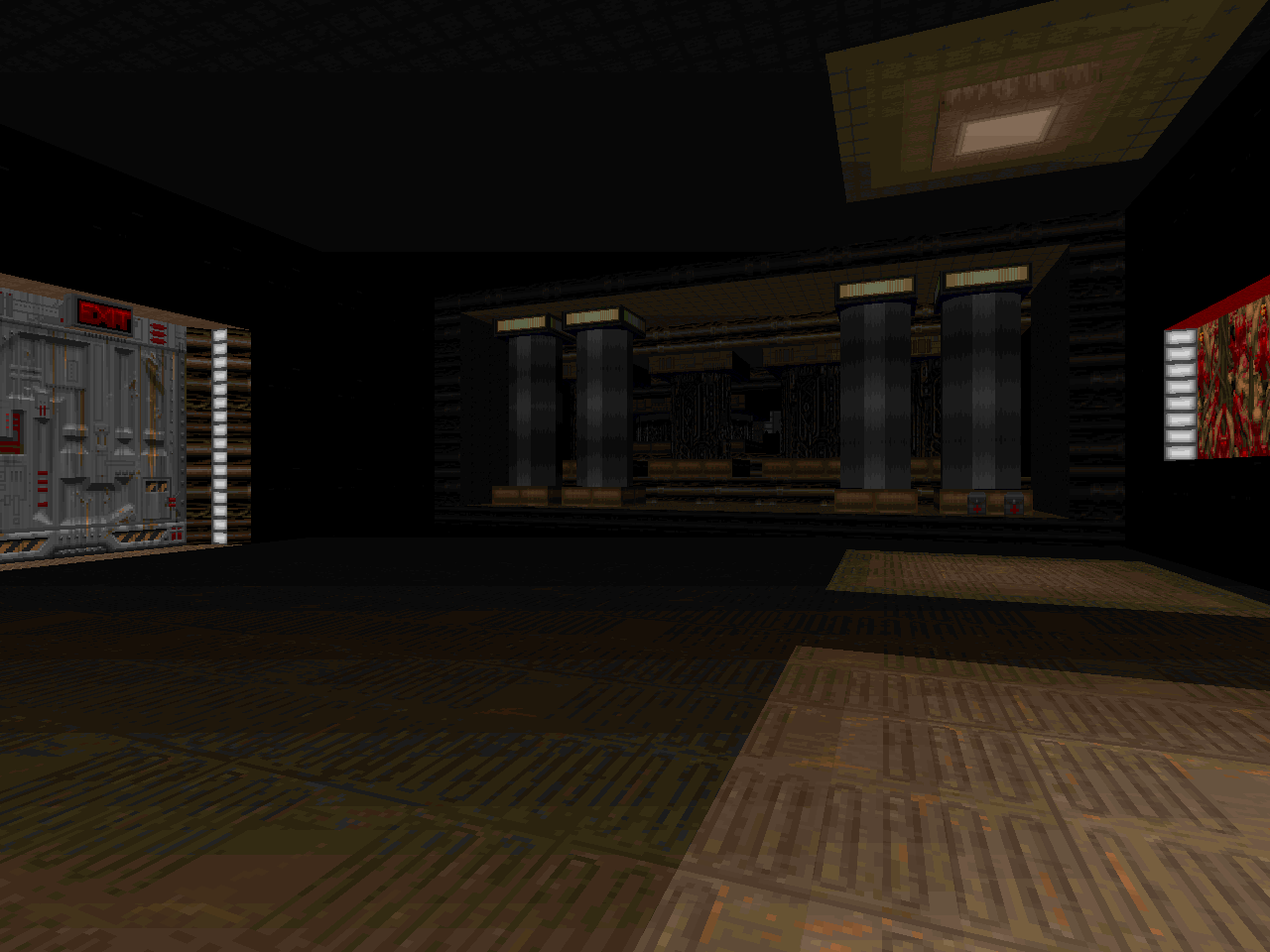 | Another medium-size base level, this one rampant with rectangular rooms and moving machinery. Bishop revels in cramped gameplay with plenty of 64 wide corridors for sneaky revenants to surprise you in. The southern area, accessed via a tunnel on the fringes of Hell, is a bit more open and has an interesting secret annex to some kind of mortuary that's inessential to the level's gameplay, but very much appreciated. The northern area feels like a wasted opportunity considering the big showdown is a crowd of shotgun guys and a lowly skellington. |
| Apparatus | MAP07 |
|---|
| A short, symmetric level with a couple of nasty firefights. One thing it isn't is a "Dead Simple" retread. Highlights include the opening whack-a-mole with the zombies, battling specters in the dark with that pentagram switch, and the six (!) pain elementals you have to deal with before confronting the Spiderdemon. The arch-viles guarding the yellow key are actually pretty cute, and in spite of wandering behind the switch plate, I still whizzed the fight down my leg in a moment of idiot panic. Love the pentagram switch. | 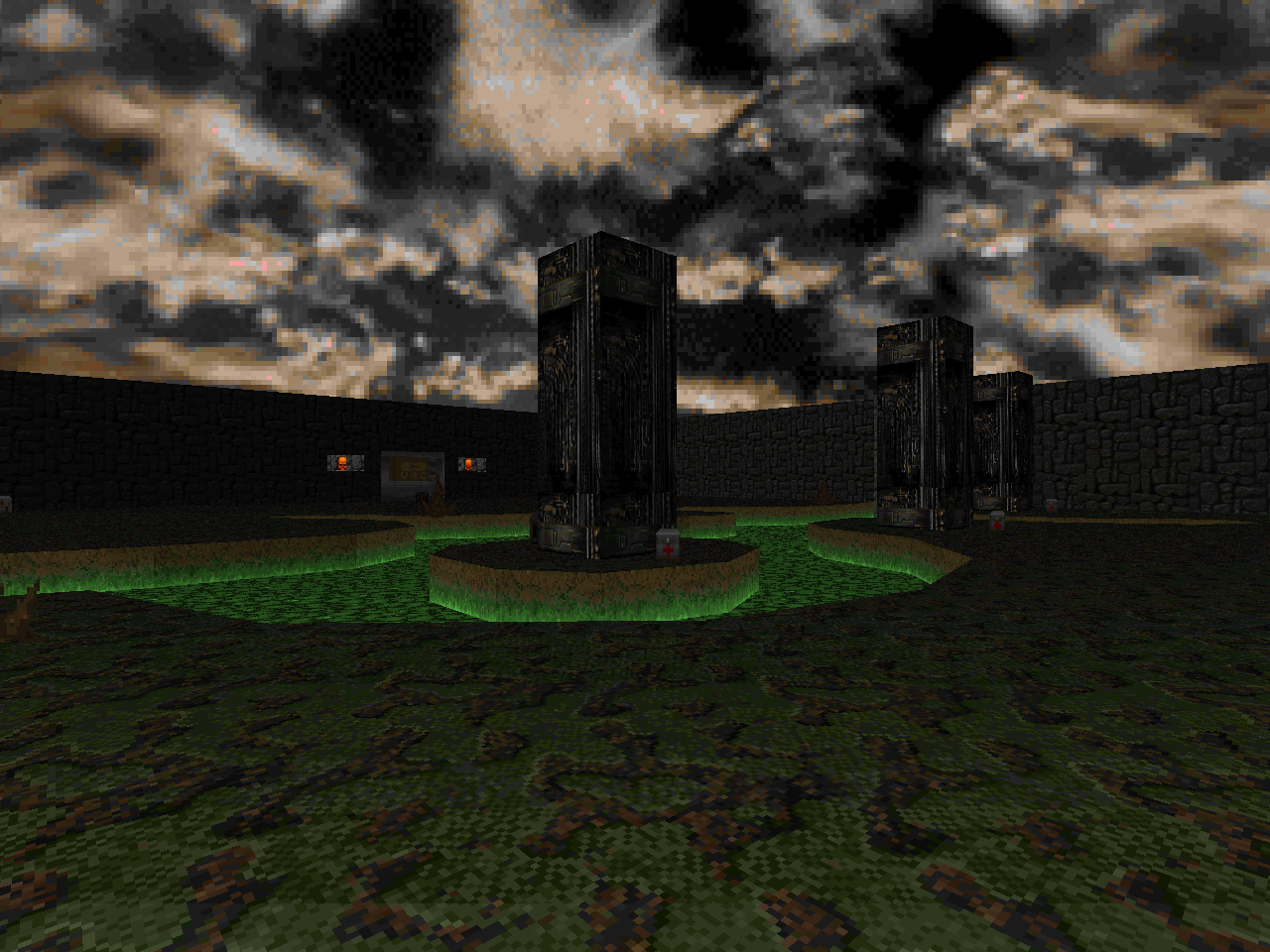 |
| MAP08 | Biolabs |
|---|
 | Another visit to a UAC tech installation; the biolabs proper, I guess. Harbin starts you off with the plasma rifle, which lets you get to work immediately, but most of the heavy lifting will be with the shotgun and, later, the combat shotgun. The rooftop fight is my standout encounter, since it's got some pressure on the player, plus the cacodemons rising up over the edge. The rest is not so exciting, but there's a DoomCute crawl through some ventilation ducts to grab the blue key. |
| Security | MAP09 |
|---|
| by Paul Corfiatis aka "pcorf" |
|---|
| Aka "Facility" from Twilight Zone II. Well, Paul gave it a new paint job that puts it in line with Biowar, and I think that the enemy entrenchment is possibly just a little more bulky, especially in the room behind the red key door. but the only real change I noticed was an extra little sewage area in the southwest that led to a megasphere. Outside of the two-revenant tango for the red key, it's a fun blastathon with an amusing optional area which grants a rocket launcher for a mild battle with some Hell knights and cacodemons. |  |
| MAP10 | Dark Woods |
|---|
 | Now this is something different. Harbin takes you on an adventure through the "Dark Woods", which are composed of viney-walled ruins with tall tree trunks that disappear into the canopy far overhead. It's an aesthetic I've seen rarely done and different each time. Harbin's execution is adequate, and the unique locale is a pretty cool twist. The open areas plus trees allow for some sneaky ambushes from lowly monsters but the actual combat is very slow paced due to restriction to the shotgun and chaingun. |
| Frozen Terror | MAP11 |
|---|
| Harbin takes you on another journey, this time through a nondescript series of ice tunnels, like an ancient fortress carved out of a glacier... kind of. The best action is at the beginning, like carving through the demons to secure the combat shotgun and shortly afterward dealing with more demons, imps, and a revenant. The true standout encounter, though, is the finale, a slow elevator ride with some joyriders that you'll have to take out. It's not nearly as intense as the most famous elevator firefights (like "The Descent") but it matches the pace of BIOWAR perfectly. |  |
| MAP12 | Military Center |
|---|
 | A slightly longer version of "Terror Core". It's a teleporter hub, and you have to grab all three keys before you can exit out one of the destinations. The hub is a lot bigger, thankfully, and while it's almost symmetrical, the monsters inside and outside aren't, not that they put up much of a fight. The teleporter destinations are micromaps encased in cubes that you can see from the main hub and take barely any time to clear, making this a very fast play. I think that the commandos lurking in the corners of the opening is the most dangerous part. |
| UAC Prison | MAP13 |
|---|
| by John Bishop |
|---|
| Bishop takes a far left turn for this level, which is more in line with what I've played of his work. "UAC Prison" is a massive compound that feels out of tune with the implied tech moniker, since it's mostly stone and other infernal acquisitions. The prison definitely fits, though. There are tons of cages, particularly in the level's eastern half (which finishes with an enormous shotgun guys shootout), which is buried deep below the surface through some successive elevators. The western cavern section is my favorite, though, with a bunch of monsters on the floor that you can round up and hose down with some plasma. I guess the entryway, with all the H.R. Giger paintings, is a nice opener. You'll have to fend off a lot of teleport waves that repopulate the main section with tons and tons of shotgun ammo. |  |
| MAP14 | Absolution |
|---|
 | Harbin moves solidly away from the techbase aesthetic that dominated the earlier half with this somber journey through Hell. It's a medium-size level with a fatal design flaw that will trap the player; proceeding into the eastern yard without having lowered the red key pillar will get you stuck. Apart from that, it's fun to explore and the southwestern teleporter wing leaves you with a ton of rockets, which should make some of the fights - like some gratuitous baron action - blow by pretty quickly. It's a pretty smooth play, provided you don't get trapped outside. |
| Heat | MAP15 |
|---|
| This is a pretty cool Hell level, mostly underground with the main chamber flooded with bright light lava. Some of the map channels the granite "Spirit World" aesthetic, with one arch-vile encounter in particular sticking out in my mind. The initial combat is kind of hectic but there aren't a great many monsters and you can quickly get about to exploring the lava tubes once you snag the rad suit. There are a couple of neat visuals and it's cool to see Harbin use the Hexen trapwall texture to obscure a mancubus cubby. |  |
| MAP31 | Juggalo Funhouse |
|---|
 | I'm not sure what I was expecting to find in the secret map slot, but it wasn't this. It's a pretty straightforward hub level, but every encounter - once you get inside the "Funhouse" - has some sort of gimmick to it that keeps things feeling semi-fresh, whether it's the imps and commandos in the dark in the main chamber or sneaking around the Spiderdemon to grab the plasma rifle in the northwest. The finale is best handled by waiting out the Cyberdemon while you flip the switches, revealing some revenants and a handy BFG plus ammo. |
| The Killing Fields | MAP16 |
|---|
| In contrast to what has gone before, "Killing Fields" is a huge, sprawling level with some enormous, open areas for you to slay some demons. It's a hodgepodge of several different themes, sending you through gothic grinders, Hellish jungles, and the deep underground. The biggest danger is hitscanner attrition given the lack of cover, but the actual pace of the map is pretty relaxed. There's even an obligatory "Barrels o' Fun" section that houses the plasma rifle. Of all the themes, I like the skull cube monitor maze near the heart of the map, which has a strange, cyberpunk-ish flair. |  |
| MAP17 | Sacrilege |
|---|
 | Harbin plays with the teleporter hub again, but this is a much more fun layout, kicking off with an ominous Cyberdemon-guarded platform that plies into investigations into two significantly larger teleporter-accessed wings filled with tons of classic action and even one of those two-way bridge / wall things that The Innocent Crew was so fond of. Traps like the floor melting away into nukage are pretty cool and the northwest area has a decent cavalcade of imps in one of the teleporter ambushes. The Spiderdemon gauntlet in the finale isn't some kind of super-climax, but it's a decent finish to a great action ride. |
| Die Heuschrecke | MAP18 |
|---|
| Starts off with a battle through a beige brick fortress suspended in the void complete with revenant-staffed platforms and one with two arch-viles that requires just a bit more grace. Once you've kicked all the asses, it's time for the exit... which dumps you into a blood-filled Boss Brain arena, housing the big bad, codenamed TCHERNOBOG. You should have plenty of health and plenty of ammo, and you can't get telefragged, so just flip the switches until you reveal the thing that opens its gaping craw and snuff its mockery of a heart out. The actual trip inside is pretty cool with all the hanging gore and it's even got a couple of guardians. |  |
AT DOOM'S GATE II:
THE THRONE OF BALE





























The download link leads to a 404 error.
ReplyDeletenvm it's my problem something with my machine
DeleteThe custom sounds are lower quality than I remembered. Still a decent mapset I played as a kid, though.
ReplyDeleteI'll admit, it is nice to see more reviews of older episodes/megawads. Biowar is one I'd visit quite a bit back in the 2000's.
ReplyDeleteThanks for reviewing this! I agree that its an easy but engaging mapset. That's part of what makes it a good wad to suggest to people that are just getting into Doom IMO. It sorta offered a bunch of the novel aspects of the cool megawads from the period (Icarus, Strain, Requiem) in one little package. So many things have come out since 99' though, that there are sure to be a bunch of other good recommendations for new doomers haha
ReplyDeleteStill wonder what the source of that hudface is. I always found it comic-book like too.
yeah, like there is a class of people just getting into doom that like the short stuff a la demonfear and for the most part biowar is right in there plus a little bit of its own zest.
DeleteA decent mappack with some good track choices. I can see potential here.
ReplyDelete